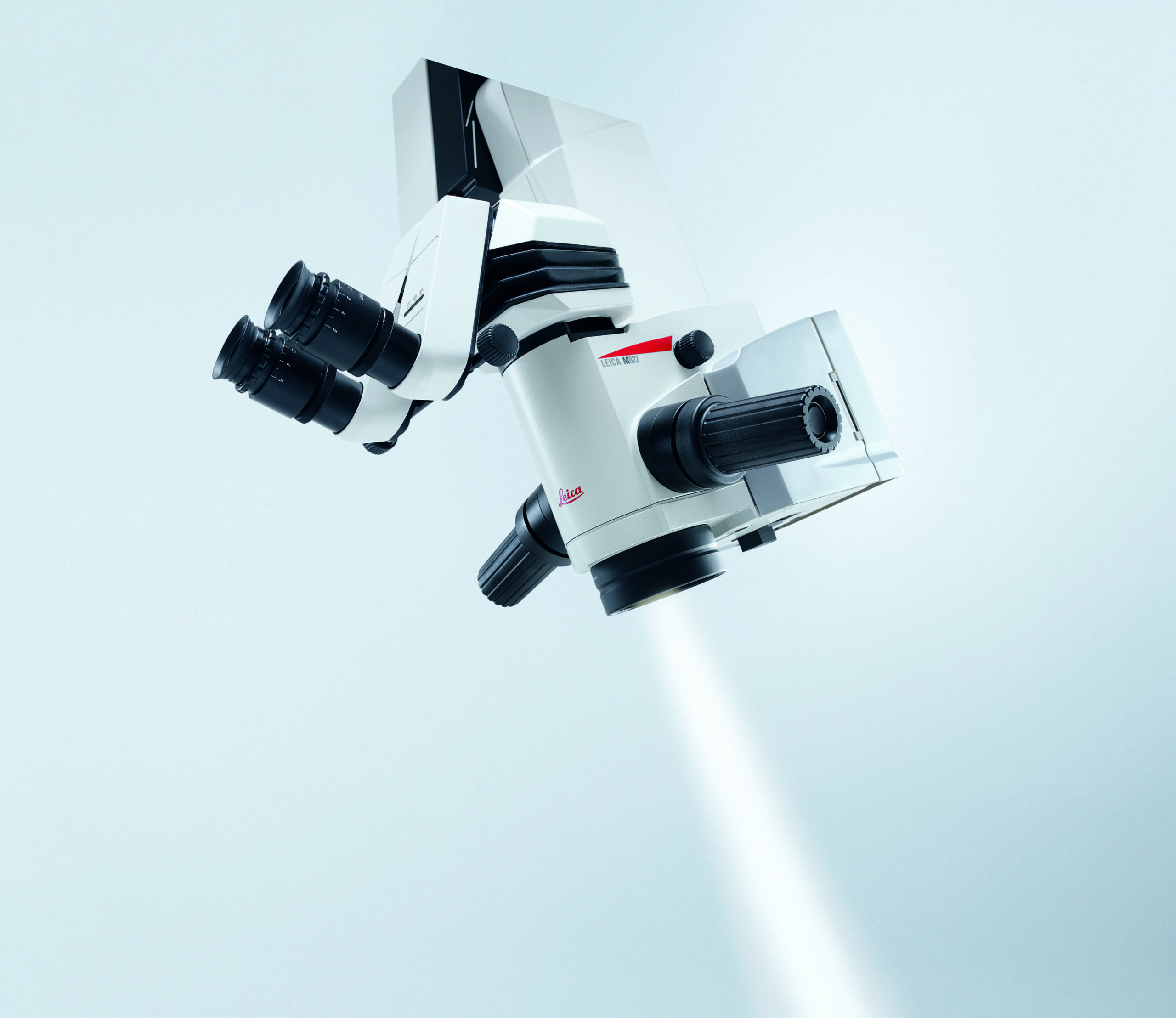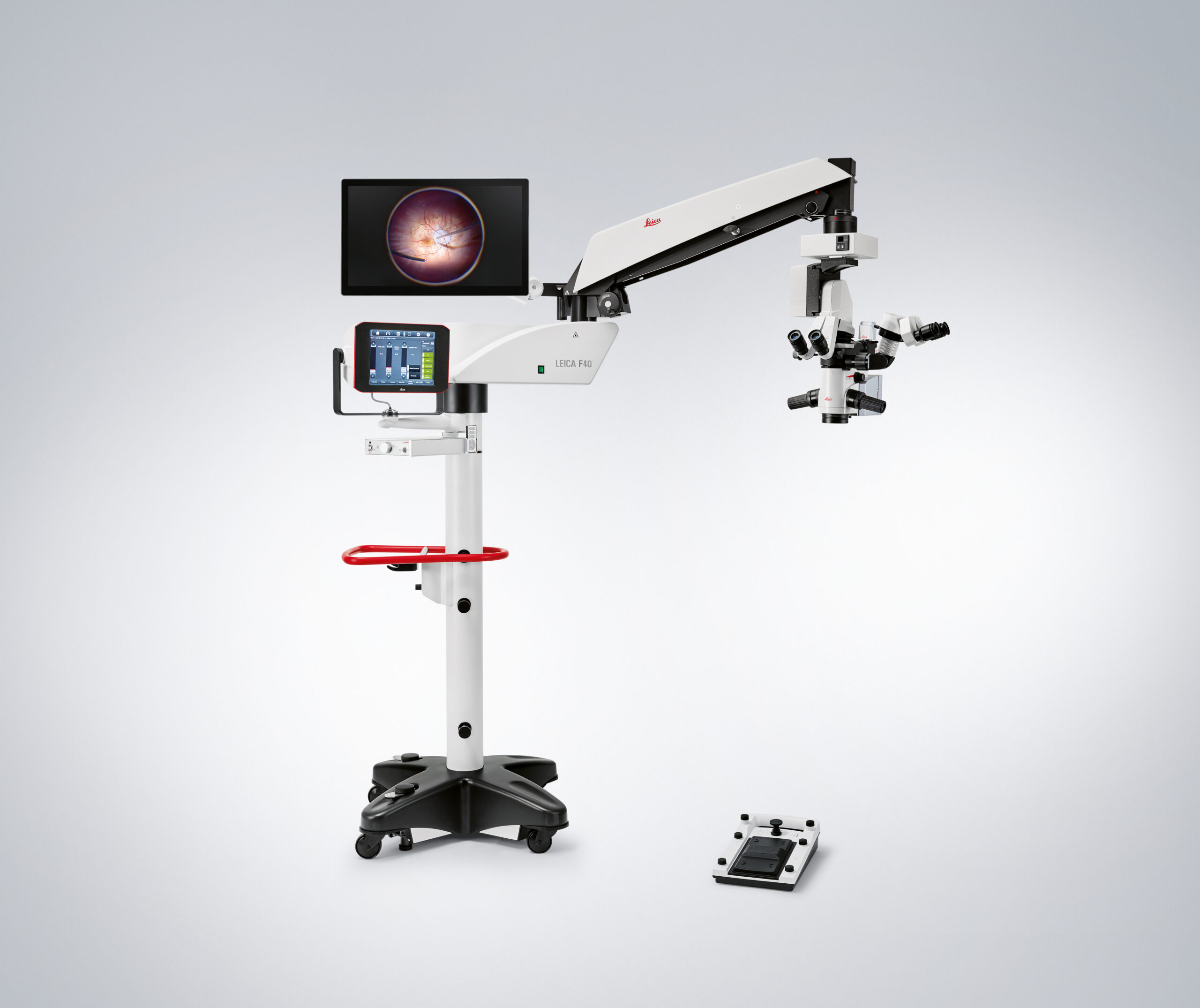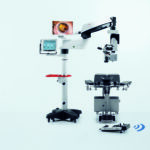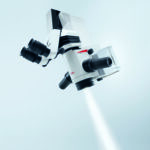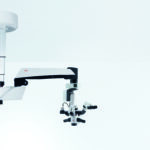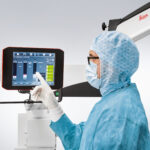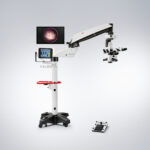M822 oftalmologinis mikroskopas
Sėkmingai oftalmologinei chirurgijai labai svarbūs natūralių spalvų, didelio ryškumo ir kontrasto vaizdai. Su „Leica Microsystems” oftalmologiniu chirurginiu mikroskopu M822 dėl optimalaus vizualizavimo, pagrįsto aukščiausios kokybės „Leica” optika, ir dvigubos apšvietimo sistemos visada gerai matysite tiek atliekant priekinės, tiek užpakalinės akies operacijas. M822 sukurtas atsižvelgiant į jūsų patogumą, todėl siūlomi įvairūs ergonomiški binokuliniai vamzdeliai, leidžiantys pritaikyti mikroskopą prie jūsų kūno sudėjimo. Be to, M822 yra universalus ir turi sąsajų su plačiu apžvalgos sistemų ir priedų asortimentu, todėl padės jums atlikti įvairias akių operacijas. Naudodami specialias mikroskopo funkcijas, skirtas sklandžiai sąrankai ir darbui, M822 galėsite su komanda dirbti labai efektyviai, ypač sąrankos metu tarp operacijų. Iš anksto užprogramuoti nustatymai ir specialios funkcijos padeda vėl ir vėl atlikti tikslias ir saugias akių operacijas, užtikrinant nenutrūkstamą darbo eigą.
Darbas su ryškiu ir stabiliu raudonu refleksu
Visuose kataraktos operacijos etapuose galite pasikliauti neįtikėtinai stabiliu ir įspūdingos kokybės raudonuoju refleksu. Įmontuotas „Leica Microsystems” koaksialinis apšvietimas „OttoFlex” buvo sukurtas taip, kad aiškiai matytųsi mažiausi fragmentai, ypač kai dirbama esant silpnam apšvietimui. Net jei paciento akis operacijos metu juda, pavyzdžiui, atliekant fakoemulsifikaciją, raudonasis refleksas išlieka stabilus.
Ką reiškia tiesioginis apšvietimas?
„Leica” oftalmologiniuose mikroskopuose, tokiuose kaip M822, šviesos šaltinis yra tiesiogiai optiniame laikiklyje. Daugelyje kitų sistemų šviesos šaltinis įmontuotas į mikroskopo stendą, o šviesa į optikos laikiklį nukreipiama optiniais kabeliais.
Kokie yra tiesioginio apšvietimo privalumai?
> Mažos techninės priežiūros išlaidos: Šviesolaidžiai laikui bėgant gali prarasti šviesos intensyvumą, nes skaidulos dėl judėjimo gali nutrūkti. Jokių šviesolaidžių – tai mažiau išleistų pinigų.
> Mažas šviesos lygis: Dėl šviesos šaltinio, esančio labai arti operacinio lauko, ir didelio pralaidumo „Leica” optikos, chirurgai gali išlaikyti mažą šviesos lygį, bet vis tiek aiškiai matyti.
Mažas streso lygis: Mažiau šviesos, reikalingos akių operacijoms, tiesiogiai reiškia didesnį paciento ir chirurgo komfortą.
Daugeliui procedūrų pritaikomas mikroskopas
Naudoti vieną mikroskopą kataraktos ir stiklakūnio ir tinklainės operacijoms yra ekonomiškas būdas. M822 galima lengvai keisti vieną sąranką į kitą. Jis turi mechanines ir elektronines sąsajas, kad būtų galima priimti ir lengvai pritvirtinti įvairius priedus – dabar ir ateityje. Toks lankstumas gali padėti pagerinti darbo eigą, palaikyti geresnius chirurginių operacijų rezultatus ir leidžia pritaikyti naujus chirurgijos metodus. Galiausiai tai yra protinga ilgalaikė investicija.
> RUV 800: tinklainės plataus kampo stebėjimo sistema su integruotu inverteriu
> BIOM 5 ir SDI 4 iš OCULUS: plataus kampo stebėjimo sistema ir stereoskopinės įstrižainės inverteris
> „Toric EyePiece”: ekonomiška, paprasta naudoti, taupanti laiką pagalbinė priemonė, skirta torinei IOL uždėti
> Keratoskopas: žiedinis šviestuvas, naudojamas intraoperaciniu būdu, kad būtų galima kokybiškai įvertinti akies ragenos kreivumą ir astigmatizmą
Pasirinkite tai, kas geriausiai atitinka jūsų poreikius
„Leica Microsystems” siūlo du grindų ir vieną lubų laikiklį M822, kad galėtumėte pasirinkti optimaliausią jūsų operacinei tinkantį įrenginį.
Lengvai įrašykite ir bendrinkite
M822 suprojektuotas taip, kad užtikrintų išskirtinę vaizdo kokybę tiek pro okuliarus, tiek per kamerą. Kai prie M822 prijungsite HD C100 medicininę vaizdo kamerą, turėsite idealią sistemą, skirtą operacijoms fiksuoti ir rodyti puikios didelės raiškos vaizdo įrašus. Tiesioginį vaizdą galite lengvai rodyti išoriniame monitoriuje ir papildomai dalytis vaizdu su visa operacinės komanda. Taip pat galite fotografuoti ir įrašinėti vaizdus bei vaizdo įrašus visiška HD kokybe, o paskui juos eksportuoti į kompiuterį. Jei reikia išsamiai dokumentuoti operacijas, galite naudoti „M822” su „Med X Change” sukurta EVO 4K vaizdo įrašymo ir dokumentavimo sistema „Med X Change”.



